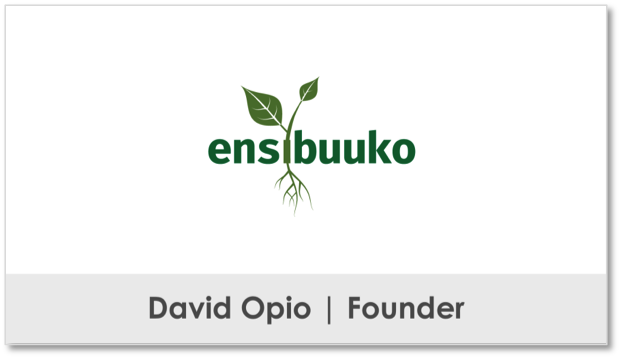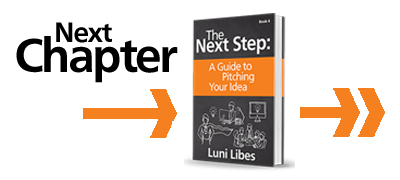Set the stage.
THE FIRST SLIDE of your presentation should be simple:
- Your company logo
- The name of your company
- Your company tag line, if you have one
- The name and title of the presenter
When presenting this slide, remember to bring plenty of energy, smile, and start strong. Remember to keep up that energy throughout the whole presentation, all the way through the questions and answers, all the way until you walk off the stage or out the door.
For this initial slide, your goal is to make a good first impression and to let the audience know that you know how to pitch. This reassures the audience and alleviates any worries that this presentation might be difficult to sit through.
RULE 13:
Remember to make a good first impression. Start strong.
A standard opening is a thank you, your name, and the name of your company. E.g., “Hello. Thank you for inviting me to present. My name is Luni, and today I’ll be presenting Fledge.” That opening is sufficient but far from exciting. Plus, it is lacking any information that is not visible on the first slide.
Instead, what you need is a “hook,” an opening statement that grabs the audience’s attention, that immediately pulls them into the story. A cliché version of an opening line begins with “Imagine a world where…” and ends with a vision of a utopia. Another cliché would be starting with a fairy tale opening, e.g., “Once upon a time,” or a variant of a literary opening, “It was the best of weeks, it was the worst of weeks.”
Like any creative process, finding a great opening will take multiple iterations. For a first draft, try expanding your tag line. For example, Nike’s famous “Just do it” could become the opening line. “Many people dream about sports. We at Nike say don’t dream it, just do it.”
RULE 14:
The opening should be creative, grabbing the audience’s attention.
After that opening line, you can then introduce yourself and your company. This is analogous to the format you often see in movies or TV shows, with a short “teaser” at the start of the program followed by the opening credits.
At this point in your pitch, you have the audience’s attention and they know who you are. Before you move on, you need to ensure they know one more thing. They need a hint about how you plan to solve the problem you’ll be describing to them.
RULE 15:
Provide a hint that you know what you are talking about.
This “hint” serves a key storytelling function: foreshadowing. Without it, the audience may start worrying that no solution is coming (an all-too-common problem with pitches), or they may start to think of their own solutions. If your hook didn’t provide this clue, then, after your hook, introduce yourself, introduce the name of your company, and follow it with a concise, five- or seven- or ten-word sentence that provides that hint. See below for an example.
To help demonstrate each section of the pitch, this book uses the pitch from Ensibuuko, one of the entrepreneurs I’ve worked with at Fledge, and one of the businesses introduced in The Next Step: Guiding You from Idea to Startup. Plus, in the Appendix, you’ll find the pitch deck for Concrete Battery, another of the example businesses from The Next Step: Guiding You from Idea to Startup.
Ensibuuko—[The Opening]

“Like access to food, water, and shelter, access to financial services is a basic human right. Hello. My name is David Opio, founder of Ensibuuko, a financial technology company from Uganda.”
The hook here is exceedingly strong, bordering on controversial, but as such, it makes the audience hungry to know more. Plus, it provides that hint, because now we know this company will do something to provide access to financial services, even if we are not sure exactly what that means.
However, to ensure that hint was understood, this opening adds, “a financial technology company,” to narrow down the meaning of financial services, and it includes the country, as that, too, is important to narrow the target market.











